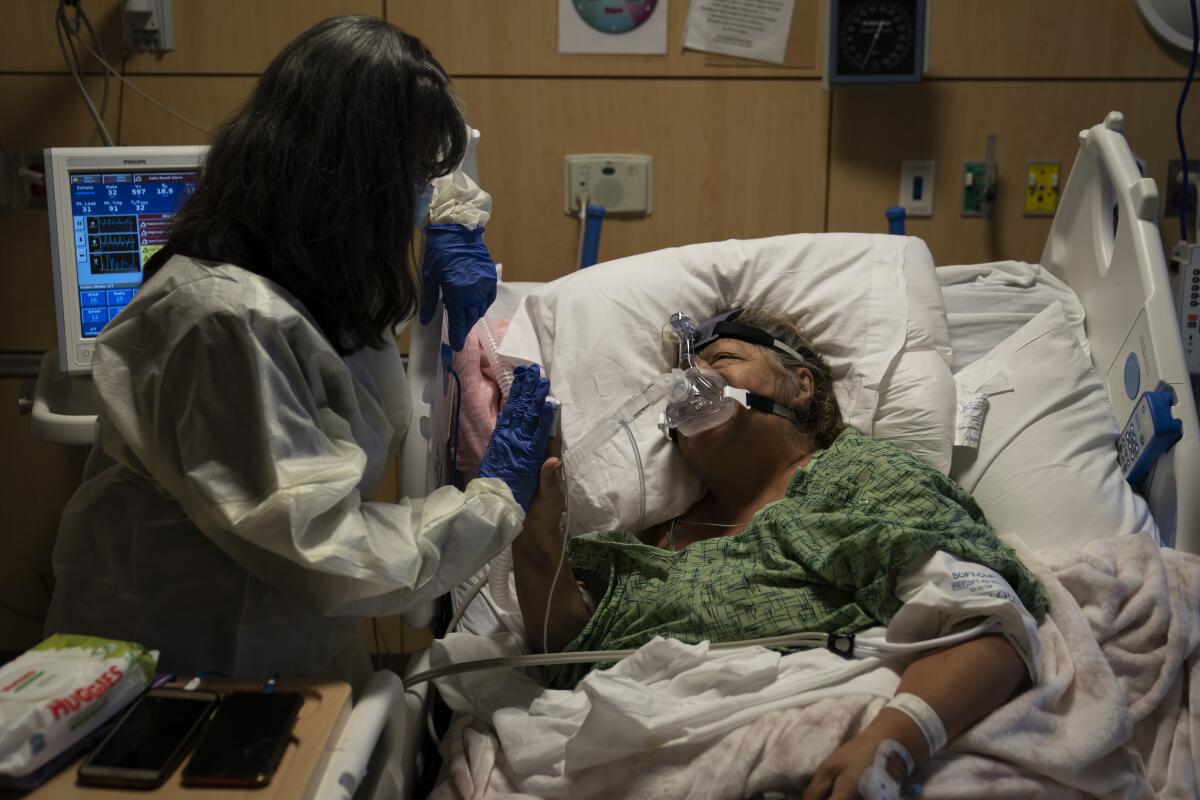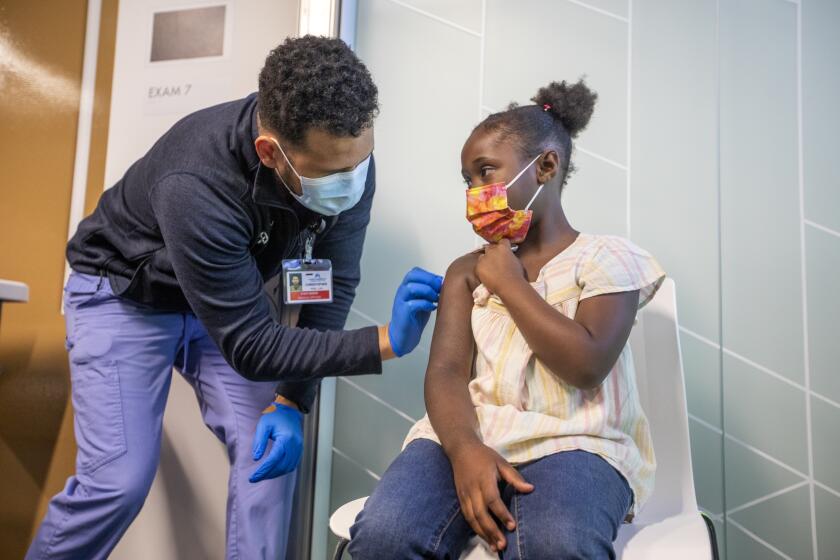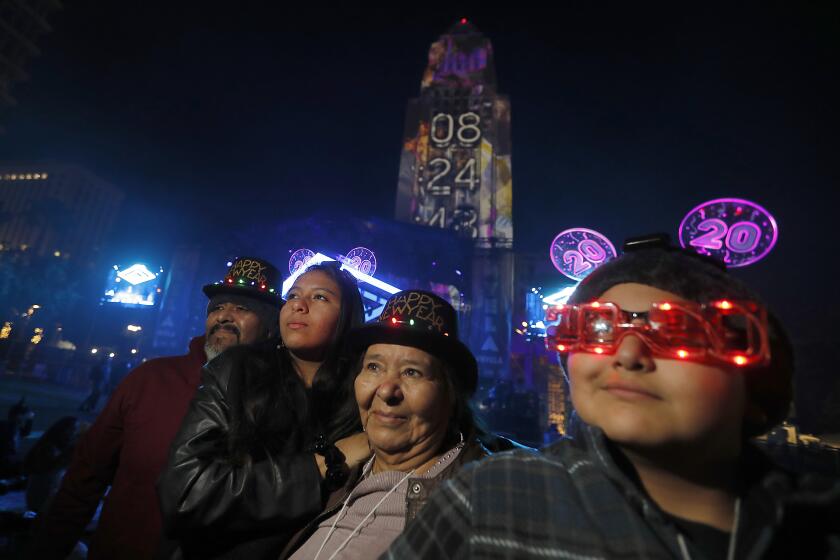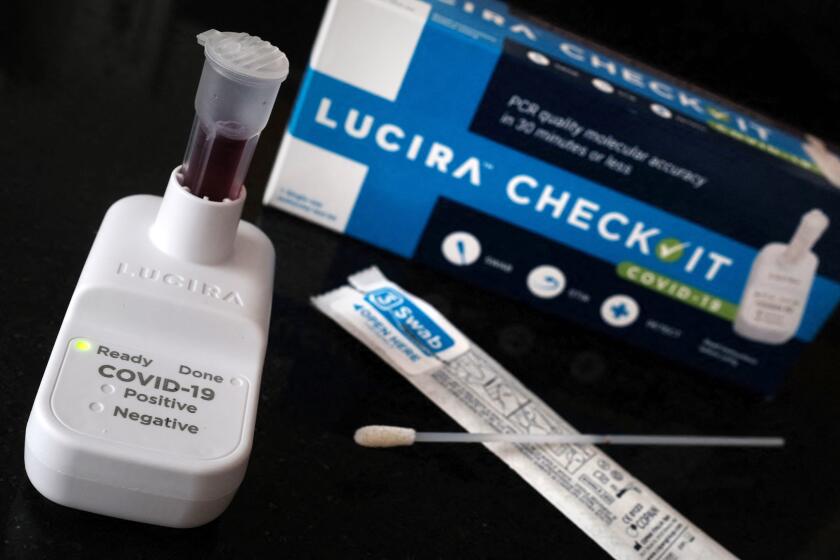California COVID cases, hospitalizations tick up amid winter warnings

- Share via
The number of Californians being infected and hospitalized with COVID-19 has crept up over the last two weeks — increases that, though slight, may worsen as winter begins and the state contends with the continued spread of the Omicron variant.
Even with the recent upticks, both metrics remain well short of the devastating numbers from last winter’s surge, when explosive growth of the coronavirus ravaged the state. But the combination of current conditions and caution surrounding the weeks to come has already prompted officials to issue new health restrictions and organizers to cancel, postpone or recalibrate some sports contests and holiday events.
The result is a Christmastime that arrives with California not at the standstill seen last year, but at a crossroads — where residents aren’t being told what they can’t do, but implored to take all possible precautions.
“To prevent ourselves from getting in trouble over the holidays, we’re asking everyone to take a lot of caution as you gather and celebrate,” Los Angeles County Public Health Director Barbara Ferrer said during a recent briefing. “If we fail to take commonsense safety measures right now, we could find ourselves in a dangerous place by the end of the month and into January, which could dramatically impede our recovery journey.”
Omicron’s growing prevalence was evident in L.A. County, which on Monday confirmed 60 new cases of the variant.
That exceeded the 49 confirmed Omicron cases that had been reported statewide to the California Department of Public Health as of last Wednesday.
“Given the rising case numbers, the high rate of community transmission, and all the evidence that, over time, our immune systems need a boost to be able to attack the COVID virus, no one eligible should delay getting their booster dose,” Ferrer said in a statement.
Over the last week, California has reported an average of 7,082 new coronavirus cases per day, up a little more than 5% from two weeks ago, according to data compiled by The Times.
Statewide, COVID-19 hospitalizations rose by just under 10% over that same period, hitting 3,523 on Sunday.
By comparison, at this time last year, California was reporting about 41,000 new cases a day on average, and hospitals statewide were caring for more than 16,800 COVID-19 patients.
Daily COVID-19 deaths also remain a fraction of what they were last December and have actually declined about 13% compared with two weeks ago.
But the pandemic continues to exact a heavy toll. An average of 69 Californians have died from the disease per day over the last week — pushing the state’s cumulative number of confirmed COVID-19 fatalities past 75,000.
Prepare for big spikes in COVID-19 hospitalizations and deaths in areas with low vaccination rates, experts say.
Health experts have long warned the changing of the seasons could further fuel the coronavirus crisis. And that was before the troublingly mutated Omicron strain stormed onto the scene.
As colder weather increasingly pushes gatherings and recreation indoors, the risk of transmission is generally higher.
On top of that, end-of-year holidays will provide ample opportunity for travel and social activities, which, if not taken with proper precautions, also could heighten the danger of coronavirus spread, officials warn.
California learned that lesson last year when infections, hospitalizations and deaths soared during the busy fall-and-winter holiday season.
A growing number of holiday events in Los Angeles County have been canceled or postponed amid a rash of new coronavirus cases.
But the state is not necessarily doomed to trod the same path. The biggest change since last year, experts say, is the widespread availability and administration of vaccines.
“With the combination of colder weather keeping people indoors, the waning of vaccine and natural immunity, and more mingling among non-household members, public health officials urge Californians to get vaccinated and boosted as soon as possible to help prevent a possible winter surge in COVID-19 cases,” the California Department of Public Health wrote in a statement Monday.
According to the latest state data, unvaccinated Californians are seven times more likely to get COVID-19, 13 times more likely to require hospitalization and 16 times more likely to die from the disease.
“We still have deaths happening because of a pandemic that has, in many ways, a strong solution with vaccinations,” Dr. Mark Ghaly, California’s health and human services secretary, said during a briefing last week. “We’re still seeing many people who are unvaccinated get quite sick and even die.”
Omicron’s arrival has amplified the call for Californians to get their initial shots and booster doses.
While the science surrounding this newest strain is far from settled, it appears to be rapidly becoming dominant. According to modeling from the U.S. Centers for Disease Control and Prevention, Omicron accounted for an estimated 73% of new infections nationwide last week.
“Everyone eligible for a vaccine needs to have one as soon as possible, and those due for a booster dose should get one as soon as they can,” Fresno County interim health officer Dr. Rais Vohra said in a statement. “The added protection of a booster will be needed to reduce infections and prevent severe illness this winter.”
There are hundreds of testing sites across Southern California, and rapid test kits can be bought at pharmacies or ordered online.
Preventative measures now include a statewide mask mandate for indoor public spaces that went into effect last week.
Health officials have characterized such rules as an effective way to help stymie coronavirus spread without resorting to the harsher restrictions and closures that marked earlier phases of California’s pandemic response.
“Even a 10% increase in indoor masking can reduce case transmission significantly,” Ghaly said in announcing the order. “Wearing a mask is going to be one of the most important things to help us get through this period of uncertainty.”
Though officials have long warned of the possibility of a wintertime coronavirus wave in California, the reality will be determined in the days and weeks to come.
“While things are definitely not going in the direction we want them to, we do have more tools to help protect ourselves this year than we did at this time last year,” Ferrer said. “But we urgently need to use them.”
Times staff writers Rong-Gong Lin II and Sean Greene contributed to this report.
More to Read
Sign up for Essential California
The most important California stories and recommendations in your inbox every morning.
You may occasionally receive promotional content from the Los Angeles Times.














